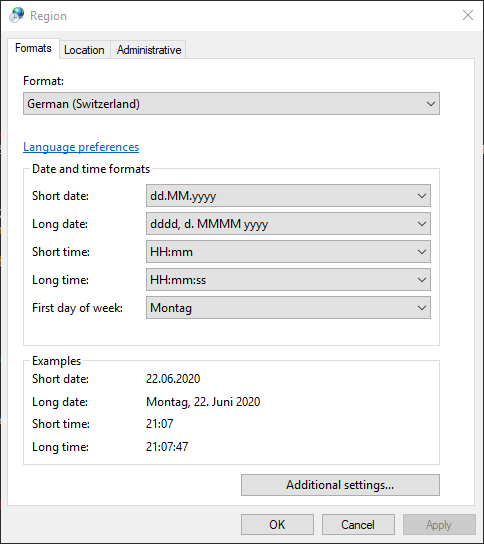

- #How to change preferences on photo import windows how to#
- #How to change preferences on photo import windows update#
- #How to change preferences on photo import windows windows#
You can save an AD user photo to a graphic file.
#How to change preferences on photo import windows how to#
Import-Csv C:\PS\import.csv |% How to Export a User Photo from Active Directory to a JPG File?
#How to change preferences on photo import windows update#
The following PowerShell one-liner command will get the list of users from a CSV file and update (upload) their photos to Active Directory: You can use the coma-separeted format of the import.csv file: AD_username, Photo Create a CSV file that contains a list of user accounts and the corresponding photo filenames. You can bulk upload and manage users’ photos to Active Directory with PowerShell. Set-ADUser jkuznetsov -Replace to Import User Photos to AD in Bulk with PowerShell? $photo = ](Get-Content C:\PS\jkuznetsov_photo.jpg -Encoding byte) First, you need to convert the image file to a byte array, and then use the Set-ADUser cmdlet to set it as the value of the thumbnailPhoto attribute.
#How to change preferences on photo import windows windows#
To add (upload) a user photo to Active Directory using PowerShell, you need to use the Active Directory Module for Windows PowerShell (which is part of the RSAT administration tools). How to Add/Update a User Photo in AD Using PowerShell?

g., HR department), you need to use the AD delegation wizard to grant the group the “Write thumbnailPhoto” permission to the OU with user accounts. If you need to delegate the ability to upload photos to other users (e.
Users can change their own photo in AD. If there are a lot of user photos in Active Directory, the replication traffic between domain controllers increases due to the growth of the NTDS.DIT file (AD database). To display a photo in Outlook 2010 or newer, at least a version of the Windows Server 2008 Active Directory schema is required. However, there is a general recommendation to use a graphic JPEG/BMP file format up to 10 KB and 96×96 pixels in size as user’s photo in AD The maximum photo size in the thumbnailPhoto attribute of the user object is 100 KB. 
The main aspects and restrictions of using user photos in AD: ThumbnailPhoto Attribute in Active Directory
Adding a Photo Tab to the Active Directory Users & Computers Console. How to Export a User Photo from Active Directory to a JPG File?. How to Import User Photos to AD in Bulk with PowerShell?. User Photos Management in Exchange and Outlook Web Access. How to Add/Update a User Photo in AD Using PowerShell?. ThumbnailPhoto Attribute in Active Directory. You can also review your imported pictures in Windows Photo Viewer, where the large preview format makes it easier to decide which newly imported pictures to delete from your computer. You can then review and organize your pictures in the Pictures library. Windows detects your newest pictures and videos and doesn't import duplicate versions of older pictures or videos that you've already copied to your computer, so you can import your pictures and videos in a single step. Why can't I choose which pictures or videos to import? Check the documentation for your computer to determine if your computer has one. Some computers and laptops have a built-in memory card reader. When you insert your memory card into the reader, you can copy your pictures from the memory card to your computer without draining your camera’s battery, dealing with connection cables, or installing additional software. If your camera uses a removable flash memory card such as Secure Digital (SD) or CompactFlash, consider plugging a memory card reader into your computer. (Optional) To tag the pictures, type a tag name in the Tag these pictures (optional) box.īy default, the folder name includes the date the pictures and videos are imported and the tag name.Ī new window opens and shows the imported pictures and videos. In the navigation pane on the left side, under Computer, right-click your digital camera, and then click Import pictures and videos. Open Computer by clicking the Start button , and then clicking Computer. What if the AutoPlay dialog box doesn't appear? To import pictures or videos from these devices, click the Import link in Device Stage. Some devices will open Device Stage instead of AutoPlay when you connect the device to your computer and turn on the device. You can change the settings that are used when importing pictures and videos, so your pictures and videos are named and organized in a way that works for you. You can also tag pictures or add additional tags after the pictures are imported to your computer. You can add descriptive tags to your pictures when you import them by typing them in the Tag these pictures (optional) box.







 0 kommentar(er)
0 kommentar(er)
